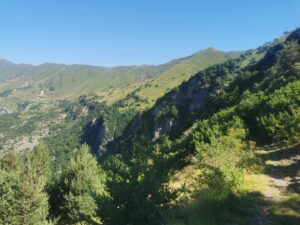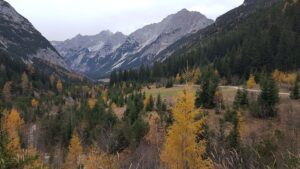Risks and opportunities of sustainable tourism development for alpine regions
Details
- Opportunities for cultural heritage of both intangible and tangible nature in alpine tourism management.
- The role of corporate regional responsibility (CRR) and the identification of regional actors in sustainable alpine tourism development.
- Perspectives on tourism activities regarding products and services to provide diversity, equality, and inclusion for minorities relating to cultures, ethnicity, gender, class, and other social characteristics in alpine regions.
Description
With the spread of touristic facilities all over the world, the added value from the tourism industry is of vital importance to global economy (WTTC, 2019). ContributingWith the contribution of approximately 50% of the global overnight stays in 2018, Europe accounts for the largest tourism continent on earth (UNWTO, 2019). Benur and Bramwell (2015) demonstrate in this regard, that diversified, linked and intensified products correspond to destinations’ competitiveness and sustainable development. Sustainability in tourism is represented by the sustainable tourism concepts, which focus on meeting “the needs of present tourists and host regions while protecting and enhancing opportunity of the future.” (World Tourism Organization, 1993, p. 7).
In this regard, cultural aspects of a destination have always been part of the discourse on sustainable tourism. Whereas tangible heritage are physical artifactsartefacts inherited from past generations, the intangible heritage includes is the nonnot material and consists of practices and representationtraditionss that are part of the culture of a community. Sustainable cultural tourism aims at preserving tangible and intangible heritage for future generations.
Building on that, corporate regional responsibility (CRR) is a aspiring concept, developed from corporate social responsibility, and brings puts aspects of geographical science into focus. Regional actors play a significant role in finding To find solutions answers to on already on goingpresent challenges and furthermore createing new approaches for a differentiated and sustainable form of tourism., regional actors play a significant role. Within the debate of a socio-ecological -transformation towards a sustainable development, regional actors may also serve may apply as so called “change agents” and can assist be implemented in a more strategic dimension of transformation. To identify the actions set by touristic-players, the concept of “corporate regional responsibility” (CRR) is implemented within the aimed research work. This concept makes it possible to detect power relations within regional governance structures and to point out opportunities for process participationparticipations. Furthermore, the concept of CRR should be combined with a variety of individual selected indicators, which are part of the scientific discourse in connection to sustainable tourism.
To foster the development of sustainable tourism in alpine regions even further, diversity, equality, and participation are central aspects to be regarded. Thus, sustainable tourism development additionally triggers the implementation of touristic services for all and, by that, transforms the social identity of minority groups in society (e.g., Seniors, Cultures, People with disabilities) towards a more sustainable one.
In short, sustainable tourism development in alpine regions has the potential to preserve cultural heritages, fosters the implementation of CRR, and triggers the inclusion of minority groups into planning processes of tourism facilities and promotional activities related to that. Nevertheless, this field of research still requires to be further discussed.
Format
TBA


